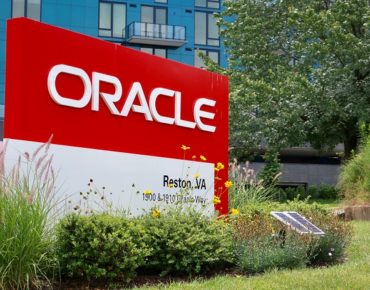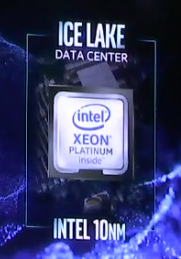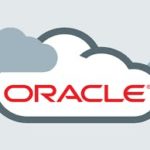Oracle Cloud Tackling More Demanding Workloads with Launch of A100 GPU Instances, Arm Plans, More

Oracle Cloud Infrastructure (OCI) is bolstering its capabilities for customers with the general availability of instances with Nvidia’s newest GPU, the A100, while also unveiling expanded collaborations with Rescale and Altair. The company also announced plans for its first foray into the Arm world with instances using chips from Ampere early next year. OCI currently offers Intel and AMD processors with plans to offer next-gen CPUs (Ice Lake and Milan) from both.
Karan Batta, VP of product management, OCI, briefed HPCwire on the news and OCI’s evolving HPC roadmap. Oracle has long been a force in the enterprise and its growing emphasis on HPC tracks the growing commercial HPC use emphasized Batta. Along those lines, Batta contends Oracle’s approach – building its own systems, from motherboard to rack – is a differentiator from rival cloud providers that enables it to customize offerings more aligned to industry needs.
The new Nvidia A100 instances provides an example. OCI has long offered Nvidia GPUs. General availability of new instances with A100s is planned for September 31 in the U.S., EMEA, and JAPAC and will be priced at $3.05 per GPU hour.
 Here’s OCI’s description: “The new bare metal instance, GPU4.8, features eight Nvidia A100 Tensor Core GPUs with 40 GB of memory each, all interconnected via Nvidia NVLink. The CPU on board has 64 physical cores of AMD Rome processors running at 2.9 GHz supported by 2,048 GB of RAM and 24 TB of NVMe storage. Oracle’s new bare metal GPU instance joins the high-speed, latency Cluster Network architecture, enabling customers to scale to 500+ GPU clusters with Nvidia Mellanox RDMA over Converged Ethernet (RoCE) for large-scale distributed workloads requiring RDMA and providing up to 1.6 TB of bandwidth per bare-metal node.”
Here’s OCI’s description: “The new bare metal instance, GPU4.8, features eight Nvidia A100 Tensor Core GPUs with 40 GB of memory each, all interconnected via Nvidia NVLink. The CPU on board has 64 physical cores of AMD Rome processors running at 2.9 GHz supported by 2,048 GB of RAM and 24 TB of NVMe storage. Oracle’s new bare metal GPU instance joins the high-speed, latency Cluster Network architecture, enabling customers to scale to 500+ GPU clusters with Nvidia Mellanox RDMA over Converged Ethernet (RoCE) for large-scale distributed workloads requiring RDMA and providing up to 1.6 TB of bandwidth per bare-metal node.”
Said Batta, “It’s bare metal, yes, but what we are offering is actually more comparable to something like an on-premise DGX [system]. We’ll also allow for cutting edge capabilities such GPUDirect via RDMA not yet available from any other cloud provider. Furthermore, you can use all the existing toolsets, pre-configured Data Science VMs, and marketplace images along with support for NVIDIA GPU Cloud (NGC).”
“It’s kind of the core Nvidia functionality, but we made some decisions [for use cases]. As an example, a DGX-1 has one terabyte memory, we doubled it, not just because we could, but because many of our large retail customers run large graph processing workloads, extremely large accelerated database workloads, [and] they need big system memory to be able to do that. We have 24 terabytes of local NVMe storage in that box, which is more than even the on-premise DGX. The reason for that is many of our oil and gas customers want local checkpointing for MPI.”
Oracle announced several accompanying images and packaged solutions including:
- AI Engineered MLOps Solution Stack – Automates the end-to-end workflow using Apache Airflow and instantiating a cluster of bare metal NVIDIA A100 shapes for distributed training and inference.
- Media Ops Packaged Solution Stacks – Automates workflows leveraging Apache Airflow framework to operate a self-managed media operations pipeline on Oracle Cloud. This enhances customers’ abilities to compress, package, and distribute content.
- Cloud Native MLOps Orchestration Package – Allows data scientists to focus on innovation by using open source Kubeflow along with Oracle Cloud Infrastructure-engineered images and the NGC cloud image to automate the movement of data and the creation of compute instances.
- Julia AI HPC Image – Automation stack for engineered HPC Image with Julia installed with Jupyter Notebook and IJulia development environment that has been tested and optimized for NVIDIA A100 GPUs. Paired with NVIDIA A100 Multi-Instance GPU technology and Oracle HPC shapes, the environment is proving to be faster than the older systems with Python.
- Pre-configured Data Science and AI Image – Includes NVIDIA’s Deep Neural Network libraries, common ML/deep learning frameworks, Jupyter Notebooks and common Python/R integrated development environments. Available in the Oracle Cloud Marketplace.
Talking broadly about OCI’s HPC effort, Batta said, “Over the last 18 months, we’ve developed our RDMA stack, our core, fundamental HPC networking stack. We call it cluster network. It’s basically this flat, hundred gig, low latency network. It’s a heterogeneous offering, meaning you don’t launch a thing, and only get a cluster of that thing. You can launch many things, and they all can be sharing the RDMA network. So you could launch potentially a GPU and edge PC and they all share the same RDMA network, which is not supported today at all in any cloud [other] provider.”
 A longtime Intel technology user, OCI plans to take its existing X7 Skylake [instance] family and move to Ice Lake early next year. Batta said, “We’ve spent a lot of time with Intel on tuning the parts and tuning the platform to our customers’ needs. We are expecting for similar cost to get about 30% performance upgrades. Those are specific for workloads like CFD and CAE traditional HPC workloads. It’s compatible with our old generations, you can still migrate data between two generations. This will also be part of our flexible instances, so you’ll be able to pick cores and memory, whichever way you want, and essentially make up your own.”
A longtime Intel technology user, OCI plans to take its existing X7 Skylake [instance] family and move to Ice Lake early next year. Batta said, “We’ve spent a lot of time with Intel on tuning the parts and tuning the platform to our customers’ needs. We are expecting for similar cost to get about 30% performance upgrades. Those are specific for workloads like CFD and CAE traditional HPC workloads. It’s compatible with our old generations, you can still migrate data between two generations. This will also be part of our flexible instances, so you’ll be able to pick cores and memory, whichever way you want, and essentially make up your own.”
Back in the spring, OCI released its latest AMD instance (E3) based on the Rome Epyc processor. It was also part of the first generation of ‘flexible compute instances” said Batta. “If you want one core and six gigs, you can get it. If you want two cores and 10 gigs, you can have it. [It’s] allowed customers to be able to do an Ala cart – pick your processor, pick your cores, pick your memory and make your own.”
Next up, an E4 instance based on AMD’s Milan processor. That’s due early next year.
Batta said workload demands (and of course price performance) tends to guide choices between processors: “What we’re seeing is like general purpose computing. Low cost ends up becoming our standard which would be AMD where it’s the lowest cost per core. If somebody wants the highest per core performance, irrelevant of the cost, and they want HPC, and they want all AVX 512, and other instruction sets, they go to Intel mostly.”
New cloud users tend to stick with what they are used, he said, and later experiment with alternatives as they become more familiar with the cloud environment.
Venturing into the Arm camp with Ampere as the processor supplier is new for OCI. “I feel now is the right time for us to take that step into Arm, making sure we have the right developer ecosystem, but also using Arm as part of our broader platform strategy with all the benefits you get out of Arm, whether it’s cost benefit or security benefit. Arm is now getting to the point where there’s several use cases like transcoding, running containers and Kubernetes, etc. This will be available early next year, again, as part of our flexible instances, you can pick and choose the number of cores and memory, on two sockets with 160 cores, if you’re new to Arm. That will be bare metal and virtual machines like all of our platforms,” said Batta.
Not surprisingly OCI singled recent HPC wins, including for example, automaker Nissan which announced it’s moving to OCI for its CFD/Crash design work and for 3D Visualization workloads.
 Never afraid to stir competitive juices Oracle founder Larry Ellison is reported to have said of OCI and automakers, “[Why] would anyone go to the Oracle Cloud to do high-performance computing when you can go to Google or you can go to Microsoft or you can go to AWS? Well, because we’re much, much faster and therefore they get the simulations done faster, but they’ve got to be willing to pay less. Almost every car—well, maybe that’s too strong—half the car companies around the world are now either using our high-performance computing or evaluating our high-performance computing because we benchmark so well against the competition. And this is all new business, like the video conferencing business.”
Never afraid to stir competitive juices Oracle founder Larry Ellison is reported to have said of OCI and automakers, “[Why] would anyone go to the Oracle Cloud to do high-performance computing when you can go to Google or you can go to Microsoft or you can go to AWS? Well, because we’re much, much faster and therefore they get the simulations done faster, but they’ve got to be willing to pay less. Almost every car—well, maybe that’s too strong—half the car companies around the world are now either using our high-performance computing or evaluating our high-performance computing because we benchmark so well against the competition. And this is all new business, like the video conferencing business.”
What Batta said about Nissan is, “I can tell you this is one of many OEMs that are running 10s of thousands of cores in production 24×7, 365 days a year on top of Oracle Cloud for specifically crash CFD. In fact, Nissan is also doing visualization on GPUs. They’re currently using (Nvidia) V100 GPUs to visualize the datasets that get produced from those simulations in the cloud directly.”
Yesterday’s new barrage also noted IdenTV a start-up which deploys AI for security applications, mostly around video processing, and DeepZen, a company that turns text to audio are using OCI’s HPC capability, notably its GPU resources. Here are two quotes from Oracle’s official announcement:
- “Replicating the human voice with AI is highly dependent on processing power and Oracle Cloud Infrastructure delivers that with the new NVIDIA A100 GPU which provided an immediate performance increase of 37% enabling us to scale our business.” Kerem Sozugecer, Co-Founder & CTO, Deep Zen Limited
- “The amount of streaming video data being created is growing exponentially. To deliver real- time analytics and insights demands the highest level of graphics processing units. Oracle Cloud Infrastructure delivers that with the new NVIDIA A100 GPU where we expect an immediate performance gain of 35%.” Amro Shihadah, Cofounder and COO, IDenTV
The deepening of OCI’s relationships with Rescale and Altair are aimed at help less experienced cloud and HPC users. Both Rescale and Altair have strong HPC expertise in cloud orchestration services.
Said Batta, “In the past, Altair built a SaaS based on our GPUs called ultrafluidX and nanofluidX (CFD solutions). It was a portion of their portfolio. Now, they’re moving their entire suite of HyperWorks products and giving us the designation of a preferred provider for their solutions.”
The OCI-Rescale relationship dates back to late 2019 with a more limited integration of the Rescale offering ongoing. The full integration Rescale products and services is now complete, said Batta, “We were figuring out synergies. You know, our platform is mature, their platform is mature, and it’s the right time to sort of culminate that effort.”
All things considered it will be fascinating to watch OCI’s effort to grow traction in HPC and in enterprise HPC in particular.










